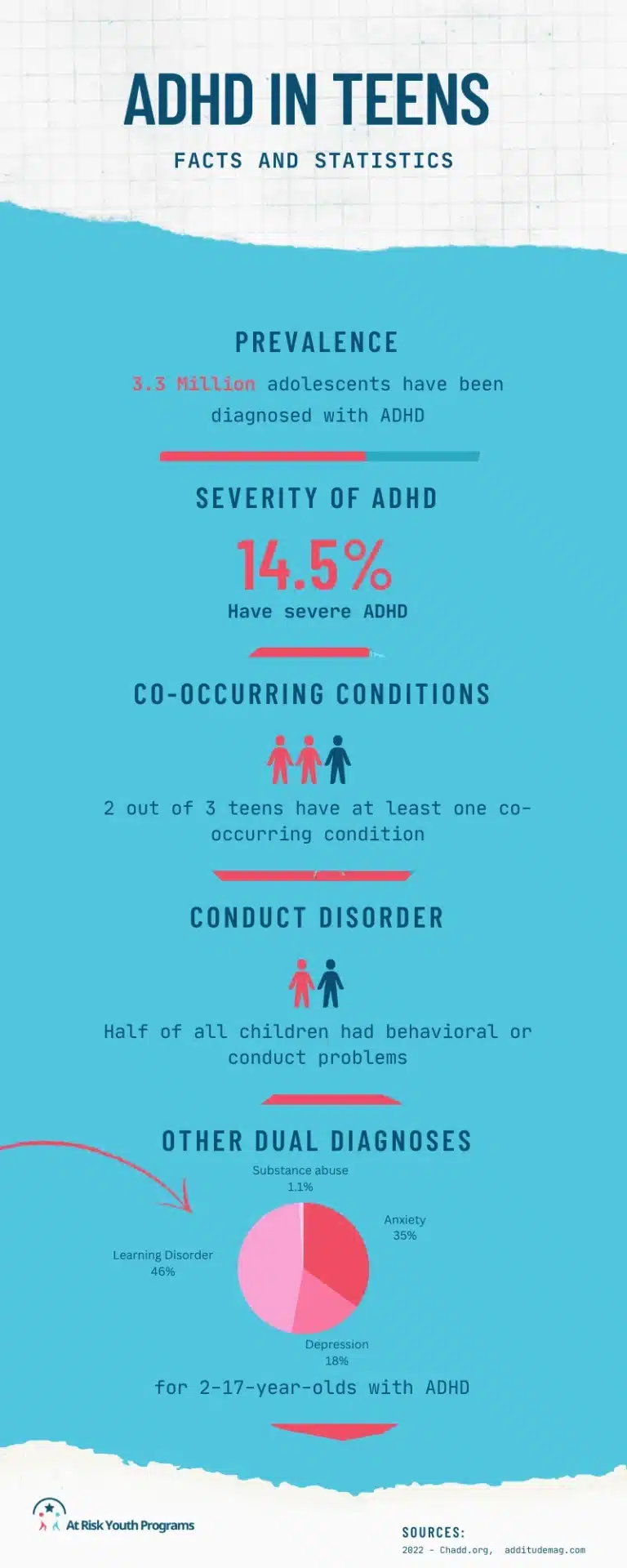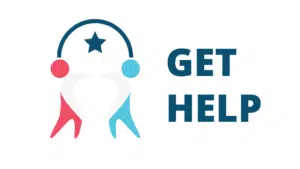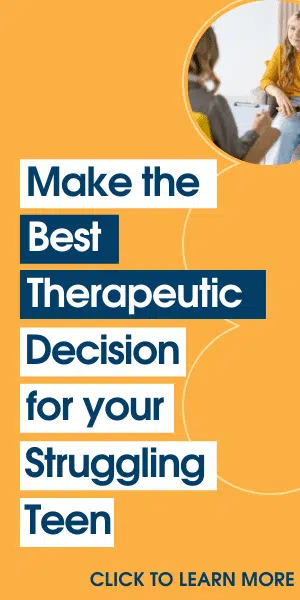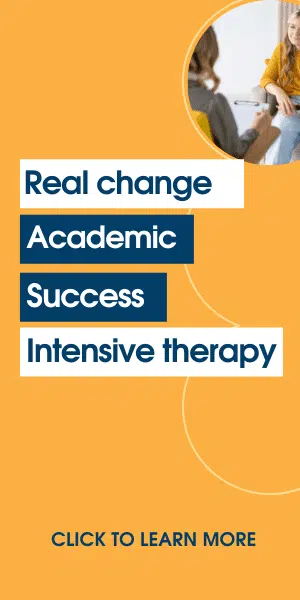Editors Note: This article was originally published on November 22, 2022, and has been updated on 7/28/2024 to reflect the latest research and information on ADHD in teenagers.
Managing Your ADHD Teen: Strategies for Regaining Control and Supporting Healing
The journey of a parent and teenager managing ADHD is challenging, but understanding how to help your teen manage their condition and regain control will make a significant difference for both of you.
The ADHD Puzzle: A Parent’s Guide to Finding the Missing Pieces
This comprehensive guide offers you understanding and support as you navigate this difficult path with your teenager. In it, we’ll explore:
- The causes, signs and types of ADHD
- Examine how attention affects children as they age
- How attention deficit disorders are diagnosed
- Dual Diagnosis and co-occurring conditions
- Discuss the various treatment options available:
-
- medication
- therapy
- structured educational programs
- inpatient treatment options for those teens at risk
-
Understanding Attention Deficit Hyperactive Disorder in Teens
Millions of children are diagnosed with ADHD every year in the United States. ADHD, a behavioral disorder, affects 13% of teenagers, as reported by the CDC.
Unfortunately, boys are twice as likely as girls to be diagnosed with this condition. However, it is indicated that girls may not receive a diagnosis until they reach adulthood.
Furthermore, over half of the children with ADHD also have a diagnosis of behavior or conduct disorder, anxiety disorder, depression, or substance abuse.
Break Through the Overwhelm: Take the First Step Towards Helping Your Child with ADHD
Facing a child’s undiagnosed, untreated, or improperly treated attention deficit feels overwhelming. You may feel powerless to help your child excel and grow into a healthy adult. However, there are options out there to help both you and your child if you are willing to think past what you have been doing and embrace a new choice.
What Causes ADHD or ADD?
There isn’t a known reason that ADHD or ADD occurs. There are a number of causes that researchers suspect lead to the disorders, including:
-
Chemical imbalances in the brain: Imbalances in neurotransmitters can affect brain function, leading to symptoms of the condition.
-
Genetics: Neurodevelopmental disorders like attention deficit disorders often run in families, suggesting a hereditary component to the disorder.
-
Brain Changes: Structural differences and brain injuries can contribute to the development of attention deficit-related conditions.
-
Development issues: Factors like poor nutrition, smoke inhalation, alcohol, substance abuse during pregnancy and other problems that can impact a baby or young child’s growing brain
From what we know, ADHD isn’t caused by stress at home, sugar, allergies, TV or the school environment. It is also important to remember that in most cases, neurodevelopmental conditions like hyperactivity, impulsivity, or attention deficit are not the parent’s fault.
Notwithstanding the challenges these conditions present during adolescence, their risk of significant struggles will increase as they get older.
ADHD Changes in the Teen Years
As kids with ADD or ADHD get older, their symptoms sometimes change, although it may be in very subtle ways. Just when you start to think they are outgrowing hyperactivity, they start having new challenges like difficulties managing their frustration or disappointments.
Your teenager may start acting out when they are embarrassed or frustrated. Some may not realize that they have a problem, while those that recognize something is not right, try to overcompensate or hide it.
Here are some struggles that are a telltale that there’s more going on:
- Feeling tired even after getting enough sleep.
- Frequent arguments or fighting with close friends.
- Feeling stressed about seemingly small tasks
- Suffering from low self-esteem
- Feeling ostracized as an outsider from their peers.
- Struggling with engaging in activities they find boring.
- A disconnect with parents and general feelings of being misunderstood.
The tricky part is that it can be hard to know what is typical behavior for a teen. However, when you recognize there is something more serious going on than just puberty and hormones, trust your instincts.
Recognizing the Signs of ADHD in Your Teenager
If your child frequently forgets chores or other daily tasks, struggles to stay organized or find things, starts to fidget, is constantly moving or restless, makes hasty or risky decisions, and constantly interrupts or is impulsive, you need to consider that ADHD is likely the reason and get them the right level of help.
There are three primary types of ADHD:
- Predominantly Inattentive Type (also known as ADD): Primarily characterized by difficulty focusing, forgetfulness, and disorganization.
- Predominantly Hyperactive-Impulsive: Mainly marked by excessive movement, restlessness, and impulsive actions.
- Combined Type: A combination of both inattentive and hyperactive-impulsive symptoms.
The severity of the symptoms varies, and it is common for them to change as your teen gets older.

For a comprehensive understanding of ADHD symptoms in teens, we encourage you to read “What are the symptoms of ADD/ADHD in teens?” The symptoms of ADHD can present differently in boys and girls. Typically, boys are physically restless, whereas girls internalize their symptoms, making them less evident.
Beyond the ADHD Diagnosis
Understanding these symptoms is just the first step. It is just as important to recognize how these symptoms impact your teen’s life. This deeper understanding will help you make better decision about their education, their mental health, and choosing supportive environments for your child to thrive.
To explore educational settings specifically designed to support students with ADHD, check out our article “Recommended Alternative Schools for a Child with ADHD.” These schools offer personalized programs that can make a significant difference in your child’s academic and personal success.
Beware of Other Conditions that Resemble ADHD
As we explore ADHD further and discuss strategies to manage it, it is important to realize that other conditions can mimic or coexist with attention deficit disorders. This makes it harder to diagnose or treat.
Many mental health issues share similar symptoms often leading to misdiagnosis. Choosing a qualified mental health professional who can accurately assess your child’s specific situations and rule out other underlying conditions.
Understanding Dual Diagnosis
It is common for anxiety and depression to accompany ADHD in teenagers, in this case, the clinal term often used is dual diagnosis. This combination of these mental health conditions significantly impacts your teen’s behavior, emotions, and overall well-being.
- Anxiety Disorders in Teens with ADHD: Anxiety can manifest as constant worry about upcoming events or an excessive concern over past actions. This anxiety can worsen over time and exacerbate the inattention characteristics of Executive Function Disorders, ADHD, making it even harder for your teens to focus or stay organized.
- Depression in Teens with ADHD: Depression often looks like persistent sadness, loss of interest in activities they used to enjoy, or feelings of hopelessness. In teens with Predominantly Hyperactive-Impulsive or Combination types of ADHD, depression can deepen the challenges of impulsivity and emotional regulation.
We need to understand how these conditions interact. Each can amplify or exacerbate the effects of the other, creating more complex challenges for your teenager.

Impact of Co-Occurring Conditions
When ADHD coexists with anxiety or depression, managing the effects of these conditions is even more difficult, especially for a teen who is going through puberty and is already affected by their hormones. The negative consequences and setbacks resulting from their condition, such as their inability to focus and impulsivity, intensify their anxiety and worsen their depression. Without the right intervention and treatment, these toxic combination leads to dangerous actions like self-harm or at-risk behaviors.
A Holistic Approach to Treatment
The interplay of these conditions necessitates a holistic approach to treating ADHD. It’s not enough to treat the attention deficit on its own. To truly help your teen, the treatment must include the co-occurring conditions of anxiety and depression. They must learn new skills to help them recognize and manage their symptoms in order to get well.
In the next section, we’ll explore treatment options and strategies that can address not just ADHD but also the co-occurring conditions our intention is to provide you with a roadmap to helping your teen have a more balanced and fulfilling life.

Recognizing When Our Teen’s ADHD Needs More Intensive Help
Managing Teen Out of Control Behaviors
As a parent, knowing which behaviors to watch for and how to recognize signs that your child needs more intensive treatment is key to getting them the support they need. Here are some signs that could indicate it’s time to consider more intensive treatment options:
- Self-destructive behavior: This can range from obvious signs like self-harm to more subtle patterns of behavior like regularly getting in trouble at school to the point that it is affecting them socially or academically.
- Overwhelm: If your teen seems consistently overwhelmed, unable to complete their usual tasks, shutting down emotionally, or having trouble prioritizing their tasks (even more than usual), these are signs that their ADHD is out of control.
- Emotional dysregulation: If they are unable to or have difficulty controlling their emotions, have intense outbursts, or are unable to calm down after an emotional event, then it is time to get additional professional help.
- Academic struggles: Some teens do well in school, but others may struggle with their grades, tests, or even attending their classes (known as school refusal). In fact, 32.3% of students with combined ADHD have a high school dropout rate that is twice as high as non-ADH teens. It is common to see gifted kids struggle with school performance due to their ADHD and co-occurring conditions.
- Withdrawal and avoidance – If your teen isolates themselves, avoids social situations or spends an unusual amount of time alone, it could be a sign of underlying anxiety, depression, or that their current ADHD treatment isn’t effective.
Remember: These behaviors are signs that your teen needs more support, even if they are taking meds or under treatment. If they do not have an ADHD diagnosis but you recognize these signs, be aware that sometimes it can be hard to spot and diagnose, especially in girls who are good at masking symptoms.
Facing the Challenges
When your child’s behavior is out of control, they are undiagnosed, untreated, or improperly treated for their ADHD, it is natural for parents to feel overwhelmed or powerless. Sometimes finding the right course of action feels daunting. However, you need to know that there are effective treatment options available to help both you and your child.
When to Consider Intensive Treatment for Your Teen
Sometimes, traditional approaches might not be enough. Exploring more intense treatment options, like sending your teen to an inpatient treatment program, could be the right decision for your child.
While not easy, we need to objectively consider that these kids have a higher risk of dropping out of high school, having trouble finding good jobs, and having a higher risk of addiction. Thus, untreated or poorly managed ADHD can have long-lasting consequences. Early intervention and treatment can empower your teen to reach their full potential.

Creating a Consistent Home Environment: Stability is vital for children with ADHD. A structured home routine supports school efforts by providing a consistent backdrop and aiding in anxiety reduction. This includes regular bedtime routines, an organized study area, and clear, consistent expectations.
Parent-Teacher Collaboration: Actively participate in your child’s educational journey. Attend parent-teacher meetings, embrace feedback, and work together on strategies that can be applied at both school and home.
Teen Treatment Options: ADHD Medications and Therapy
While there’s no cure for ADHD, existing treatments can significantly improve the quality of life. Effective treatment for ADHD typically involves a combination of medications, educational strategies, behavior therapy, and supportive therapy.
Pharmacological Treatments
The primary treatments in the United States for ADHD are stimulant and non-stimulant medications.
-
Stimulant Medications: These medications can help improve focus, attention, and impulse control. They work by increasing the levels of certain brain chemicals (neurotransmitters) that regulate attention and behavior. Common stimulants include methylphenidate (Ritalin, Concerta) and amphetamines (Adderall, Vyvanse).
-
Non-Stimulant Medications: These medications, such as atomoxetine (Strattera) or guanfacine (Intuniv), work differently than stimulants and may be prescribed when stimulants are ineffective or cause unwanted side effects. They can also be used in combination with stimulants to address specific symptoms.
Similar to how glasses aid in focusing vision, ADHD medications help individuals maintain focus on their thoughts and reduce distractions, which is particularly beneficial during school hours. However, these medications do not cure ADHD but rather alleviate symptoms temporarily.
Some studies indicate that stimulant medications may pose risks like heart problems and exacerbate psychological symptoms in some children, leading to worsened behavior.
When stimulants are ineffective or problematic, often manifesting as anger or defiance, non-stimulant medications can be prescribed. These drugs increase brain norepinephrine, improving attention. Nonstimulants are primarily used for treating ADHD.
Therapy for ADHD
Various therapies are available for managing ADHD. Children with ADHD often receive behavioral counseling, social skills training, and parent skills training from mental health professionals.
Cognitive Behavioral Therapy (CBT):
- Cognitive Component: Focuses on identifying and correcting cognitive distortions, encouraging a positive outlook.
- Behavioral Component: Involves environment modification to boost concentration and learning, addressing both problematic and positive behaviors and teaching relaxation techniques, communication skills, and exposure therapy for overcoming fears.
Social skills training, akin to CBT, is crucial for teaching new behaviors and improving social functioning, aiding ADHD individuals in better communication and social interaction.

ADHD Boarding Schools: What to Expect
ADHD boarding schools offer structured environments that cater to the unique needs of students with ADHD. These schools integrate routine, healthy activities, and therapeutic support to manage ADHD symptoms.
By providing a consistent structure, ADHD boarding schools help improve academic performance and personal development. Specific examples of how these schools manage ADHD symptoms include personalized schedules, regular physical activities, and access to therapeutic resources.
A supportive environment ensures that students are understood and helped by trained staff, fostering an understanding of their condition and promoting self-advocacy. Regular physical activities and therapy sessions further aid in managing symptoms and preparing students for future challenges.
Considering Residential Treatment to Help Teens with ADHD
Moody teen without a care for the future—or something deeper?
For some, residential treatment programs offer a comprehensive solution for ADHD, particularly when co-occurring conditions are present.
What is Residential Treatment?
Specialized facilities where teens live temporarily, receiving intensive support and therapy for ADHD and any co-occurring disorders. These environments are structured to meet the specific needs of teens with ADHD.
Benefits of Residential Treatment:
- Comprehensive Care: A combination of academic support, behavioral therapy, and medical management.
- Personalized Attention: Smaller enrolment allows for individualized care and tailored therapeutic interventions.
- Learning Coping Strategies: Teens acquire skills in emotional regulation, time management, and social interaction.
- Family Involvement: Many programs include family therapy and parent education, equipping the entire family to support the teen’s progress.
While your child is in an ADHD residential treatment program, they will benefit from the following:
- Learning emotional regulation – A vital issue for ADHD kids is the challenge of managing their emotions. This is a common strategy taught in residential treatment.
- Improving academic performance – One of the biggest risks for ADHD kids is the risk of falling behind academically. ADHD can make it hard to stay on track in school, and leaving school for therapy or medical appointments lets them fall even further behind. In residential treatment, they get the chance to catch up while receiving necessary treatment and support.
- Controlling impulses and improving high-risk behaviors – Teens with ADHD often lack the mental brakes necessary to stop dangerous or high-risk behaviors before they escalate. In treatment, they learn how to stop these behaviors when needed. This gives them the best chance to excel in the future as adults.
- Embracing a brighter future – Some of the best minds in the world have ADHD, but in the teen years, the disorder can create many challenges. With the right treatment in a residential facility, you will give your child the best chance at overcoming these challenges and finding success.
Selecting an RTC to Aid Teenagers with ADHD
When considering a residential treatment program, thorough research is essential. Look for accredited facilities with experienced staff, a robust academic curriculum, and a successful history of aiding teens with ADHD.
Visiting the facilities and speaking with staff and other families can provide valuable insights.
By exploring these treatment options, you can craft a comprehensive plan addressing the myriad needs of your teenager with ADHD, charting a course for their success and overall well-being.
Finding Hope: A Parent Recounts their Experience Choosing ADHD Residential Treatment
Dear Owen,
As I sit here, reflecting on the challenges and experiences that led us to consider a residential treatment center for our son, James, I realize it’s a story of hope and perseverance. James was diagnosed with ADHD when he was seven. We navigated the early years with a mix of therapies, school accommodations, and endless patience. But as he entered his teen years, the challenges intensified.
High school brought a new world of struggles for James. His impulsivity wasn’t just about blurting out answers in class anymore; it led to risky behaviors that scared us. His inattention became more than unfinished homework; it was about missing out on essential life skills. And then there were the co-occurring issues – anxiety and bouts of depression that seemed to tighten their grip on him.
We tried everything. Adjusting his IEP at school, therapy, medication adjustments, but the pieces didn’t seem to fit together. It felt like we were always a step behind, reacting to problems instead of preventing them. Our family was in a constant state of alert, and the stress was affecting all of us, including James’s younger sister.
The turning point came during a particularly tough parent-teacher conference. It was clear that despite the school’s best efforts, they were not equipped to handle the complexity of James’s needs. That’s when we heard about ADHD residential treatment centers. I remember the mixed feelings – hope, fear, guilt. Could we really send our son away? Was this what he needed?
We researched tirelessly. We visited facilities, talked to experts, and met with families who had walked this path before us. The more we learned, the more we realized that this was a chance for James to receive holistic care tailored to his unique challenges. A place where he could learn coping strategies, get consistent therapy, and be in an environment designed to help him succeed.
The decision wasn’t easy, but watching James thrive in the residential program, seeing his confidence grow, and his abilities strengthen, we knew it was the right choice. He’s not just learning to manage his ADHD; he’s learning to excel despite it. And as a family, we’re learning too – about letting go, trusting the process, and most importantly, about hope.
Our journey is not unique, but it’s ours. And if sharing it helps another family find their path to hope and healing, then it’s a story worth telling.
Finding Help
The Behavioral Health Treatment Service Locator is a helpful resource for finding mental health services in your area. For more guidance, visit our Help with Illness page. If immediate support is needed, call 1-800-275-TALK (88255) or text “HEY” to 74181 for the Crisis Textline. If you’re struggling with ADHD in your family, don’t hesitate to reach out to a residential treatment center. We can help connect you with resources and support.














